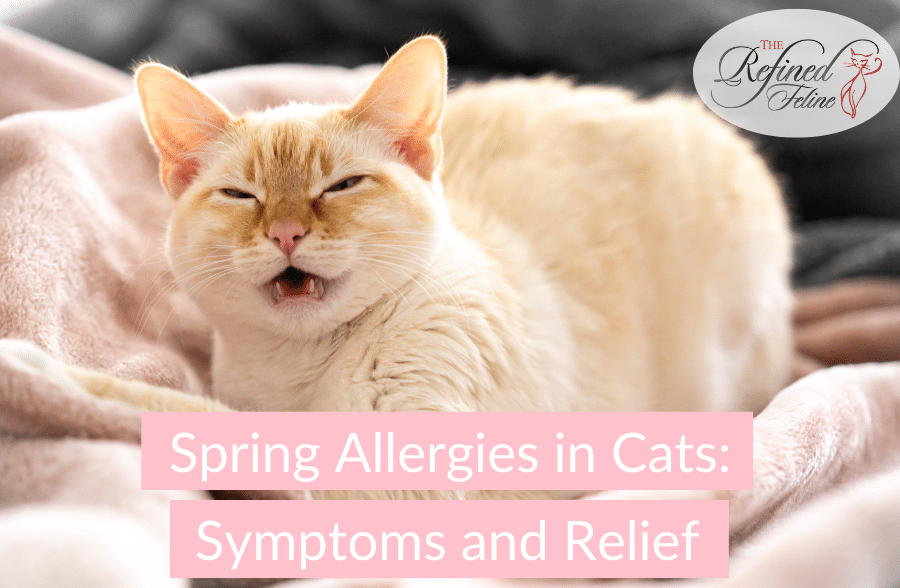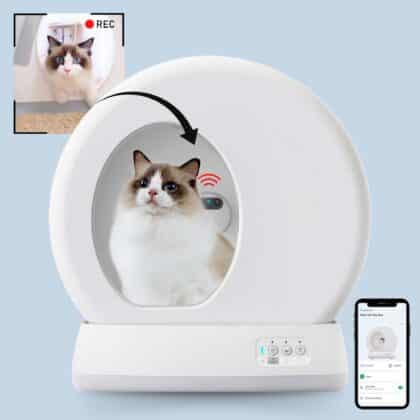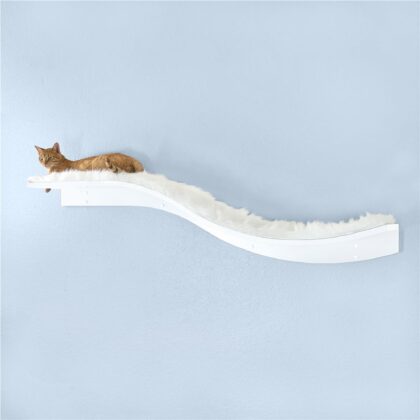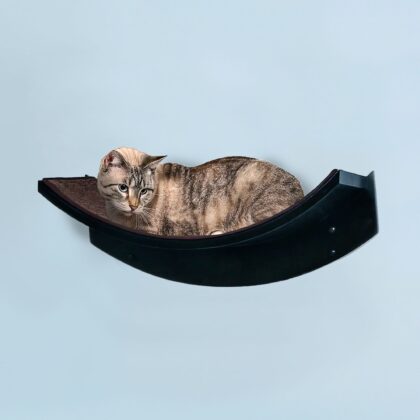
Spring Allergies in Cats: Symptoms and Relief
As spring flowers bloom and trees release their pollen, many of us reach for tissues to combat seasonal allergies. What many cat owners don’t realize is that our feline companions can suffer from similar seasonal reactions. Spring allergies in cats are more common than most pet parents realize, yet the symptoms often go unrecognized or are mistaken for other conditions. At The Refined Feline, we believe that a comfortable cat makes for a harmonious home, which is why understanding and addressing your cat’s seasonal allergies is essential for their wellbeing—and your peace of mind.
Understanding Feline Allergies
Allergies in cats, much like in humans, are overreactions of the immune system to substances that are typically harmless. Dr. Elizabeth Colleran, past president of the American Association of Feline Practitioners, explains: “An allergic reaction occurs when the immune system identifies a normally harmless substance as dangerous and mounts a defense against it, releasing chemicals that cause inflammation and irritation.”
Spring allergies in cats are typically triggered by environmental factors that become more prevalent during this season:
- Tree, grass, and flower pollen
- Mold spores that thrive in spring’s damp conditions
- Dust mites that multiply during spring cleaning
- Insect activity that increases with warmer weather
Unlike humans who primarily experience respiratory symptoms, cats more commonly develop skin reactions and irritations, making their allergies sometimes harder to identify.
Related: Indoor Garden for Cat Enrichment: Cat-Safe Plants for Spring
Recognizing the Signs of Spring Allergies in Cats
Being able to recognize allergic reactions in your cat is the first step toward providing relief. Watch for these common indicators:
1. Skin Symptoms
The most prevalent allergic manifestations in cats affect the skin:
- Excessive grooming: Pay attention if your cat suddenly spends more time licking, particularly their paws, abdomen, or base of tail
- Hair loss: Patchy fur or thinning areas can result from both the allergic reaction and overgrooming
- Skin redness or rash: Check your cat’s skin for irritated areas, particularly on the face, neck, and belly
- Small scabs or crusty areas: Often called “miliary dermatitis,” these skin lesions resemble tiny millet seeds
- Ear inflammation: Redness, discharge, or excessive scratching at ears
2. Behavioral Changes
Allergies can significantly alter your cat’s normal behavior:
- Increased scratching: Beyond normal grooming, watch for persistent scratching at the same areas
- Restlessness: Difficulty getting comfortable or settling down
- Irritability: Less tolerance for handling, especially of affected areas
- Head shaking: Frequently shaking the head indicates possible ear irritation
3. Less Common but Serious Symptoms
While less frequent, some cats may display respiratory or gastrointestinal signs:
- Sneezing or coughing: Especially if seasonal and recurring
- Watery eyes: Clear discharge from one or both eyes
- Wheezing or labored breathing: Requires immediate veterinary attention
- Vomiting or diarrhea: In cats with food allergies that may coincide with seasonal allergies
The Refined Feline recommends monitoring your cat’s behavior closely during seasonal transitions, as subtle changes often provide the earliest indication of allergic reactions.
Distinguishing Allergies from Other Conditions
Several conditions can mimic the symptoms of allergies in cats:
- Parasites: Fleas, mites, or other parasites can cause similar skin irritation
- Infections: Bacterial or fungal skin infections may resemble allergic dermatitis
- Food sensitivities: Reactions to certain ingredients can occur coincidentally with seasonal changes
- Stress-related behaviors: Environmental changes in spring may trigger stress-related overgrooming
A proper veterinary diagnosis is essential for effective treatment, particularly if symptoms persist or worsen despite home care measures.
Creating an Allergy Management Plan
Once you’ve identified potential allergic reactions in your cat, a multi-faceted approach provides the best relief:
1. Environmental Management
Reducing allergen exposure is a crucial first step:
Indoor strategies:
- Regular cleaning: Vacuum carpets and furniture with a HEPA-filtered vacuum
- Air purification: HEPA air purifiers like the Levoit Air Purifier available on Amazon can significantly reduce airborne allergens
- Limited outdoor access: Consider restricting outdoor time during high pollen days
- Wipe down after outdoors: Gently wipe your cat with a damp microfiber cloth after outdoor exposure
- Washing bedding: Clean your cat’s bedding weekly in hot water
Home modifications:
- Remove shoes at entry: Prevent tracking pollen into your home
- Change HVAC filters: Use high-efficiency filters and change monthly during allergy season
- Create “clean rooms”: Designate bedrooms or other spaces as low-allergen zones
The Refined Feline’s elevated cat furniture can help keep your cat above floor level where many allergens settle, potentially reducing exposure.
2. Grooming Regimen
Regular grooming removes allergens from your cat’s coat before they can cause reactions:
- Weekly bathing: For severe cases and cooperative cats, use a vet-recommended hypoallergenic shampoo
- Daily brushing: Remove pollen, dander, and loose hair with a fine-toothed comb
- Waterless shampoos: Specially formulated cat-safe foams or sprays can help between baths
Establish a grooming station near one of The Refined Feline’s stylish perches to create a comfortable routine your cat will learn to accept.
3. Dietary Support
Nutrition plays a vital role in skin health and immune function:
- Omega-3 supplements: Fish oil supplements can reduce inflammation and improve skin barrier function
- Novel protein diets: Some cats benefit from limited-ingredient diets during allergy season
- Probiotics: Emerging research suggests gut health impacts allergy responses
Premium cat foods with skin-supporting formulations are available on Amazon, including brands like Royal Canin and Hill’s Science Diet that offer specific dermatological formulas.
4. Medical Interventions
When environmental management isn’t enough, veterinary treatments can provide relief:
- Antihistamines: Veterinarian-approved antihistamines at appropriate feline dosages
- Corticosteroids: For short-term use in severe cases
- Immunotherapy: Allergy shots for identified specific allergens
- Medicated shampoos: To soothe irritated skin and reduce inflammation
- Cyclosporine: For chronic, severe allergic dermatitis
Never administer human medications without veterinary guidance, as many are toxic to cats even in small doses.
When to Seek Veterinary Care
While mild allergic reactions can often be managed at home, certain situations warrant professional attention:
- Symptoms that persist beyond 1-2 weeks despite home care
- Development of skin infections (increased redness, swelling, discharge)
- Respiratory distress of any kind
- Significant changes in eating, drinking, or litter box habits
- Lethargy or noticeable discomfort
Early intervention often prevents the development of secondary infections and chronic skin changes.
Long-Term Management of Seasonal Cat Allergies
For cats with recurring seasonal allergies, a proactive approach can minimize future reactions:
- Track symptoms: Keep a journal of when symptoms appear to identify patterns
- Preventative measures: Begin management strategies before symptoms typically start
- Year-round skin care: Maintain skin health with appropriate diet and supplements
- Regular veterinary check-ups: Address emerging symptoms early
The Refined Feline recommends creating designated clean areas in your home where your allergic cat can retreat during high pollen days, perhaps incorporating one of our elegant cat beds with washable covers.
Supporting Your Cat’s Emotional Well-Being
The discomfort of allergies can impact your cat’s quality of life beyond the physical symptoms:
- Provide extra attention and gentle play sessions
- Create low-stress environments with multiple retreats
- Maintain consistent routines during allergy season
- Consider pheromone diffusers for particularly anxious cats
Conclusion
Spring allergies can make the season challenging for sensitive cats, but with attentive observation and a comprehensive management approach, you can significantly reduce your feline friend’s discomfort. By understanding the signs of allergic reactions and implementing appropriate environmental, grooming, and dietary strategies, you can help your cat enjoy the spring season comfortably.
The Refined Feline is committed to creating beautiful, functional living spaces that complement your cat’s health needs, including those with seasonal allergies. Our elevated designs, washable components, and quality materials support clean home environments that benefit both allergic cats and their human companions.
Remember that each cat’s allergy profile is unique—what triggers reactions in one may not affect another. With patience and consistent care, you can develop a personalized approach that keeps your cat comfortable through spring and beyond.










